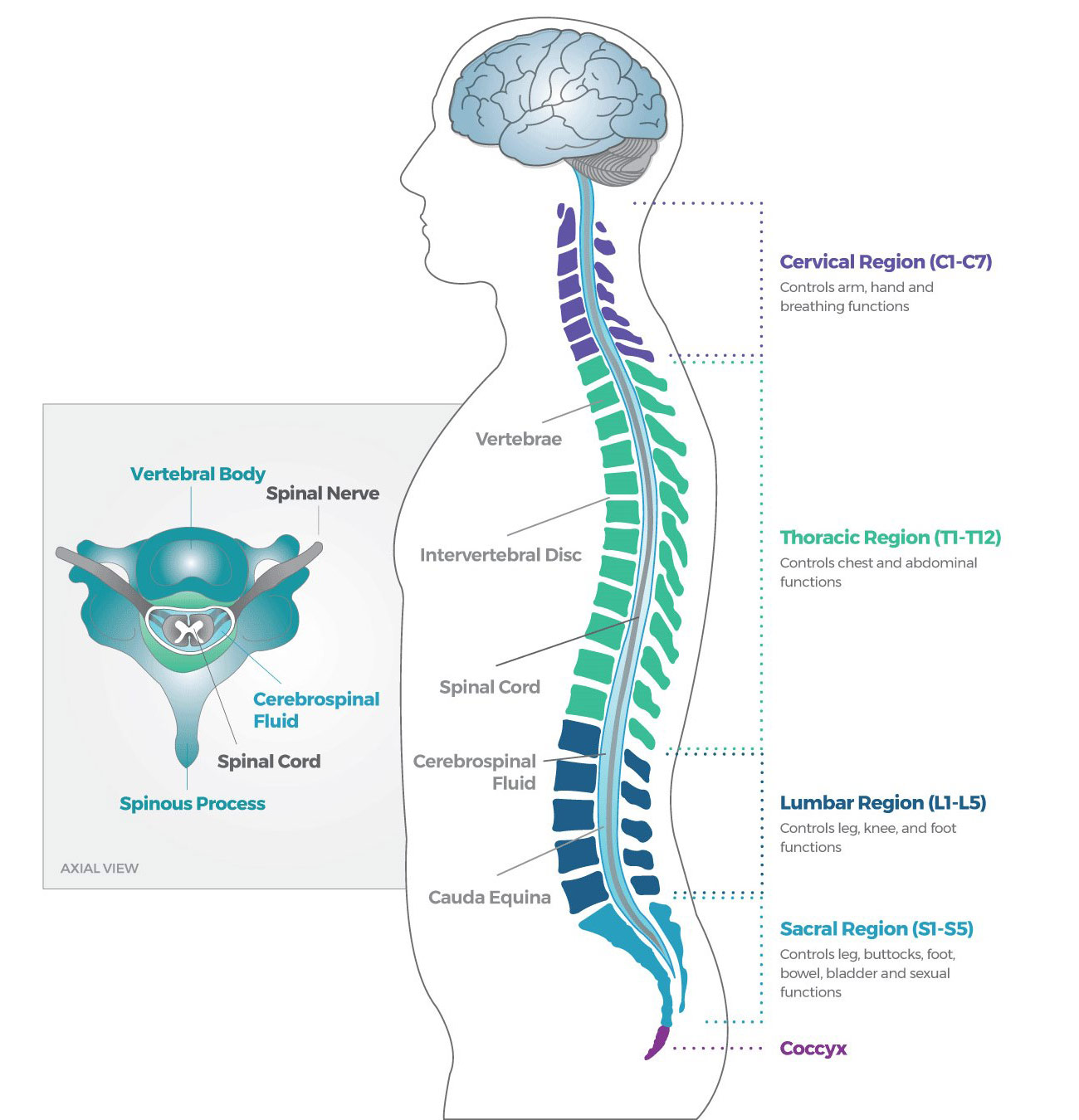
Your spine is like the backbone of your body – literally! This incredible structure plays a vital role in your everyday movements and overall well-being. In this blog, we’ll break down the fundamentals of spinal anatomy and function in a way that anyone can grasp, so you can better appreciate the marvel that is your spine.
Spinal Anatomy: The Building Blocks
Your spine is made up of 33 individual bones called vertebrae, which are stacked on top of each other. These vertebrae are divided into five regions:
- Cervical (Neck): These are the seven vertebrae at the top of your spine, supporting your head and neck.
- Thoracic (Upper Back): There are twelve thoracic vertebrae in the middle of your spine, attached to your ribcage.
- Lumbar (Lower Back): The five lumbar vertebrae are found in your lower back, providing stability and support.
- Sacral (Sacrum): These five vertebrae are fused together to form the sacrum, which connects the spine to the pelvis.
- Coccygeal (Coccyx): The coccyx, often referred to as the tailbone, is made up of four fused vertebrae at the base of your spine.
What Does the Spine Do?
Now that you know the basic structure of the spine, let’s dive into its crucial functions:
- Support and Stability: The spine serves as the central support system for your entire body. It keeps you upright and distributes your weight, allowing you to stand, walk, and perform everyday activities.
- Protection: Your spine plays a crucial role in safeguarding your spinal cord, a bundle of nerves that transmit messages between your brain and the rest of your body. It’s like your body’s information superhighway!
- Flexibility: The spine’s intricate design enables you to bend, twist, and move in various directions. It’s what allows you to touch your toes, look over your shoulder, and do all those cool yoga poses.
- Shock Absorption: The spine acts as a natural shock absorber, cushioning the impact from activities like running or jumping. It helps prevent damage to the delicate spinal cord.
Taking Care of Your Spine
Understanding the spine’s basic anatomy and function is essential for taking care of it. Here are a few simple tips to maintain a healthy spine:
- Good Posture: Maintain proper posture while sitting, standing, and lifting heavy objects to reduce strain on your spine.
- Regular Exercise: Engage in exercises that strengthen your core and back muscles to support your spine.
- Ergonomics: Make sure your workspace and furniture are ergonomically designed to reduce the risk of back pain.
- Stay Hydrated and Eat Well: Proper hydration and a balanced diet support the health of your spinal discs and joints.
- Avoid Smoking: Smoking can decrease blood flow to the spine, potentially causing degenerative spinal conditions.
In conclusion, your spine is an incredible structure that keeps you upright, flexible, and connected. By understanding its basics, you can make informed choices to keep it healthy and functioning optimally. Remember, a little care for your spine goes a long way in ensuring a pain-free and active life. So, stand tall, move with ease, and appreciate the marvel that is your spine!



